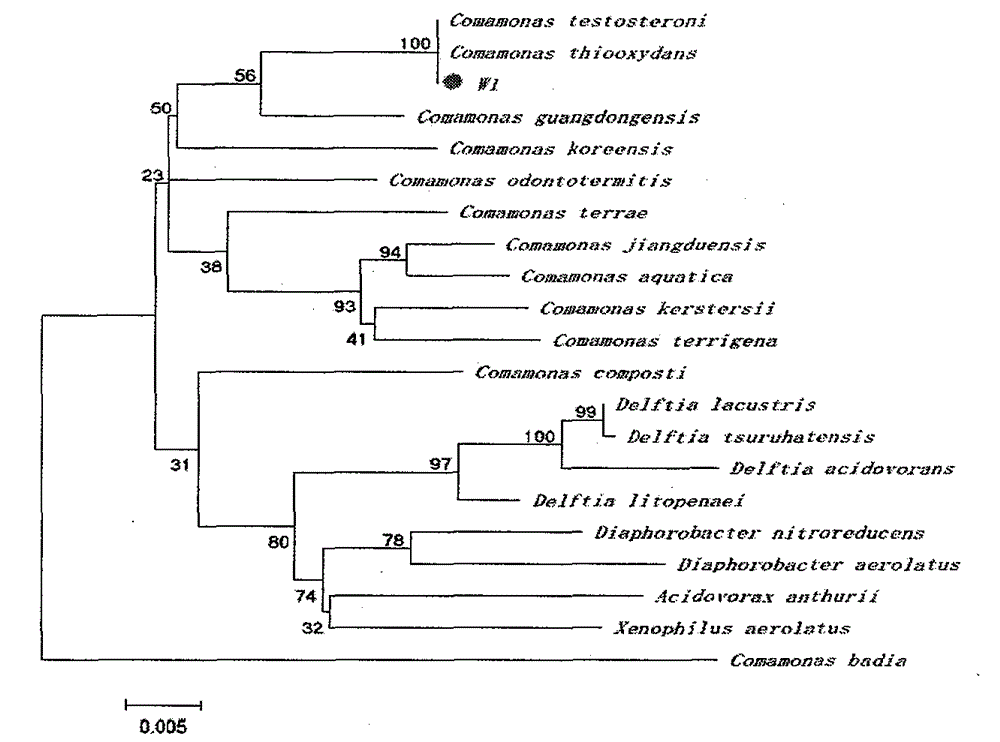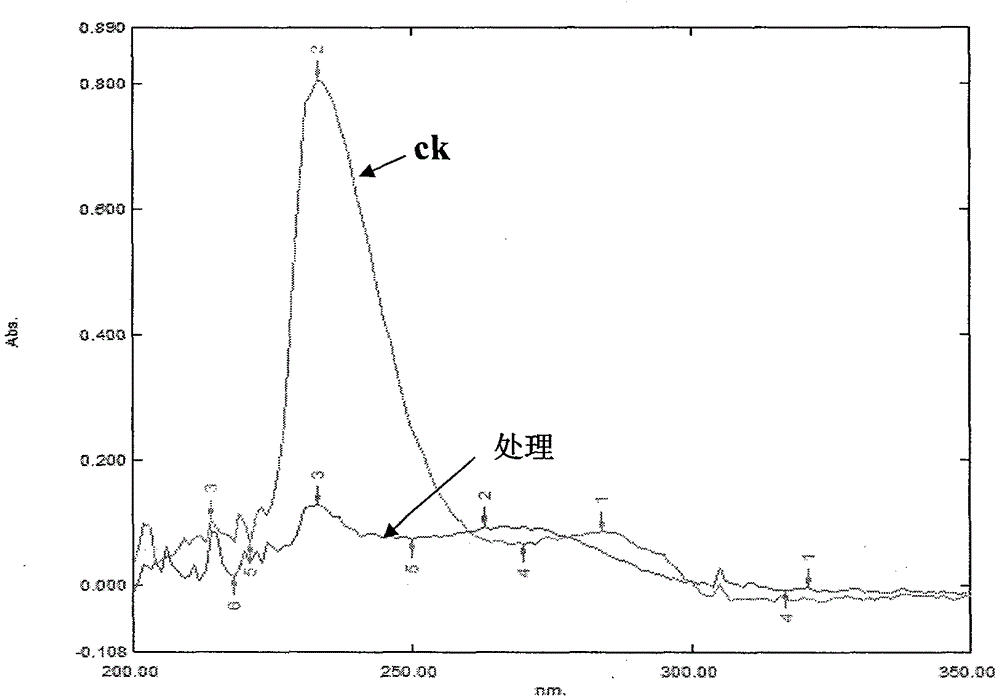Degradation bacterium capable of efficiently degrading propyzamide and application thereof
A technology of benzamid and high-efficiency degrading bacteria, which is applied in the field of microorganisms
- Summary
- Abstract
- Description
- Claims
- Application Information
AI Technical Summary
Problems solved by technology
Method used
Image
Examples
Embodiment W1
[0028] Screening of Example W1
[0029] Take 5g of soil samples (collected from Yancheng City) and place them in 100ml enrichment medium containing 50mg / L benzamide (g / L:NH 4 NO 3 1.0g, KH 2 PO 4 0.5g, K 2 HPO 4 1.5g, NaCl1.0, MgSO 4 .7H 2 (00.1g, pH7.0), cultured at 30°C, 180r / min for 5d. Measure the degradation situation of benzamide in the enriched liquid with ultraviolet scanner, after finding that benzamide is degraded, insert in the 100mg / L benzamide medium with 10% inoculum size, continue Enrichment and determination of the degradation, according to this method until the concentration of benzamide propargyl increased to 400mg / L, and passaging 3 times. After gradient dilution, the enriched solution of benzamid was spread on the LB plate containing 200 mg / L of benzamid, and cultured in a 30°C incubator for 2 days. The single bacteria with different bacterial colonies grown on the plate were streaked on the LB plate for purification, and inoculated in the liquid i...
Embodiment 2
[0033] Inoculate a single colony of Comamonas sp.W1 (CCTCC NO: M2013464) in 20ml liquid LB medium (g / L: yeast powder 5.0, tryptone 10.0, NaCl10.0, pH 7.0), culture at 30°C, 180r / min 16h to make OD 600nm = 1.0 seed solution. In the inorganic salt medium (g / L:NH 4 NO 3 1.0g, KH 2 PO 4 0.5g, K 2 HPO 4 1.5g, NaCl1.0, MgSO 4 .7H 2 (20.1g, pH7.0), insert seed solution by 1% inoculum size, cultivate with 30 ℃, 180r / min shaker, take a sample once every 2h, measure the concentration of benzamid, bacterial strain W1 can be in 90% of 100mg / L benzamid was degraded within 8 hours.
PUM
 Login to View More
Login to View More Abstract
Description
Claims
Application Information
 Login to View More
Login to View More - R&D
- Intellectual Property
- Life Sciences
- Materials
- Tech Scout
- Unparalleled Data Quality
- Higher Quality Content
- 60% Fewer Hallucinations
Browse by: Latest US Patents, China's latest patents, Technical Efficacy Thesaurus, Application Domain, Technology Topic, Popular Technical Reports.
© 2025 PatSnap. All rights reserved.Legal|Privacy policy|Modern Slavery Act Transparency Statement|Sitemap|About US| Contact US: help@patsnap.com



